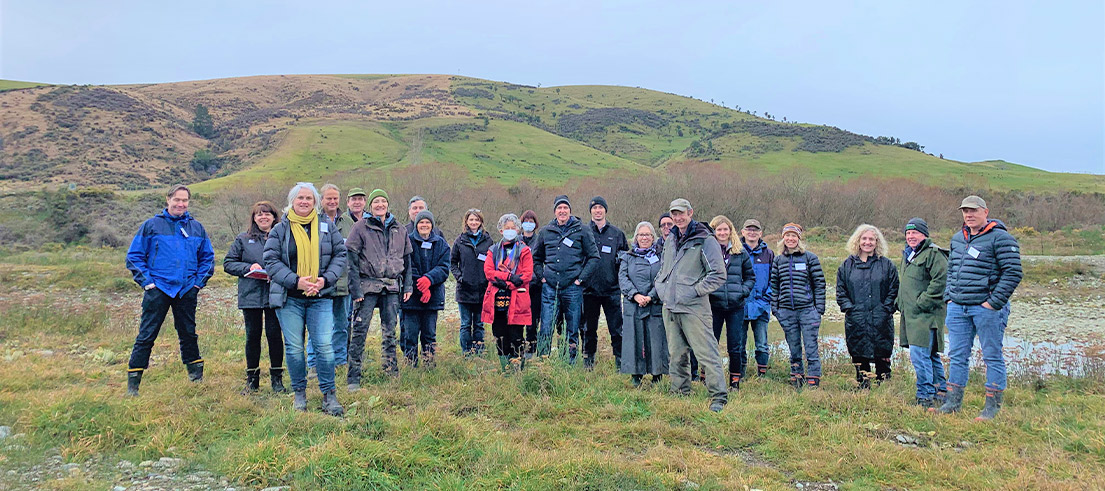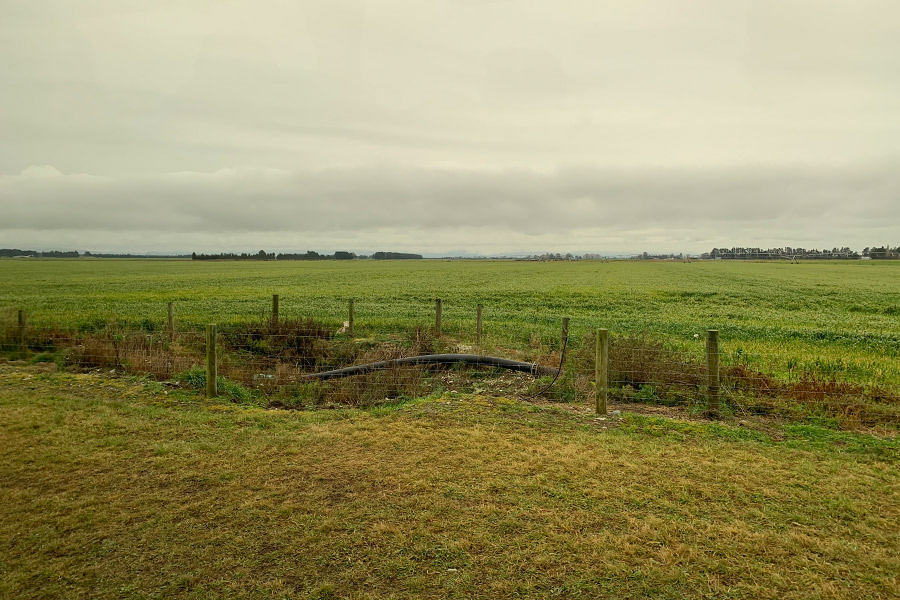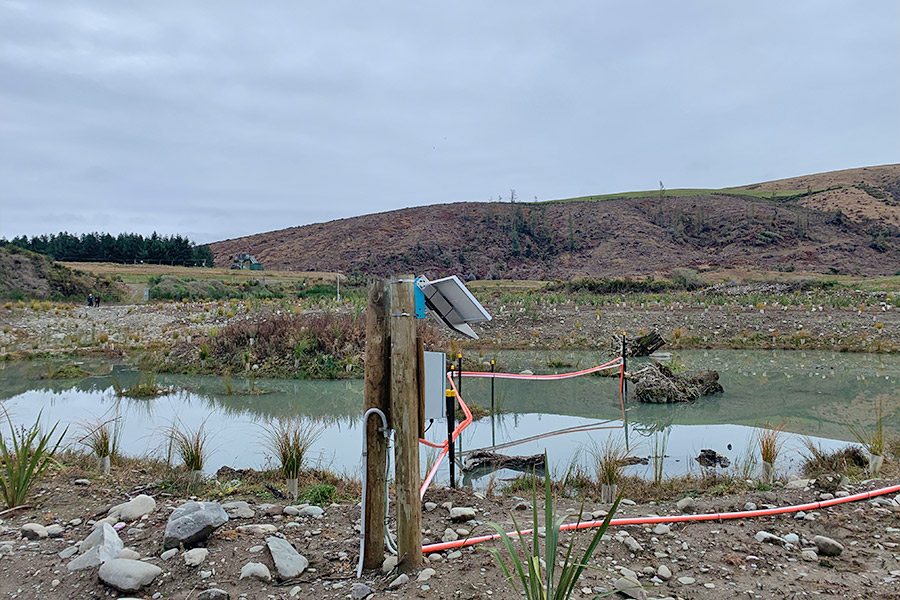
Hekeao Hinds field trip provides learning opportunities
Innovative water quality approaches were on show at the recent Ashburton Water Zone Committee’s Hekeao Hinds field trip.
The field trip allowed regional and water zone committee members to join our staff and councillors to learn about the innovative techniques being used by the Hekeao Hinds Water Enhancement Trust (HHWET) to improve local water quality.
HHWET trustees took participants to several Managed Aquifer Recharge (MAR) and Near River Recharge (NRR) sites to learn about the history of the different sites, the work that has been done to date, and future plans.
Stops included sites on Timaru Track Road, Mayfield Klondyke Road, Lennies Road and a proposed site on Winslow Road.
The Davies’ farm
Participants toured a section of Neroli and Harley Davies’ farm, Gawler Downs, where NRR work was underway. The 1187ha property is made up of hills and flat land, perfect for their sheep, deer and beef farming operations.
The 2021 Ashburton floods caused damage to some of the farm, so participants were shown the work which has taken place since which included saving harakeke/flax from metres of mud, reconstructing a wetland and installing around 10,000 native plants into the ground. Canterbury mudfish (threatened) will be released into the wetland and a DOC covenant is in place for lizard habitat.
Water quality, river flow, groundwater level, and fish population monitoring have shown improvements in all these areas over the last four years due to these steps.
MAR and NRR sites
HHWET and Environment Canterbury’s Brett Painter said MAR sites involve cleaning the topsoil off an area to create a leaky water basin or race.
"Clean water is then poured into the area, which trickles down into the groundwater helping clean the groundwater system and the springs which are connected to this groundwater," he said.
"An NRR site is the same procedure but, near a river instead of out in the plains. NRR provides a clean water top up to the target river system when flows are low. These are two of the tools being used to address water quality issues and to help ensure the community meets water legislations," he added.
Wider impact
Brett said the field trip gave him the opportunity to talk about the complexities of cleaning up a catchment which has been degraded for over 150 years.
"I’m really proud of this community, they’ve accepted the challenge of having very high groundwater nitrate concentrations, and they’re keen to change that as soon as possible," he said.
Brett said similar MAR/NRR work is taking place in the Selwyn zone, with other zones also considering the opportunity.
"Those who came from zone committees in other areas will be able to take back the things they’ve learnt and look at how they can apply it to their patch," he said.
Positive changes underway
"There’s a lot of farmers doing some awesome stuff on their properties, but it’s not always widely recognised," Neroli said.
"That’s why we’re excited to have you here today and show you the work we’re doing," she added.
Ashburton Water Zone Committee chair Bill Thomas said the field trip was very beneficial.
"It’s always great to get out and see the work that’s happening in our zone. We know this project will need our continued support in the future, with water consents, native planting funding, and community support so we will make sure to keep in touch," he said.
The Ashburton Water Zone Committee is a joint committee made up of community members, rūnanga and local councils. Find out more about the ten water zone committees.


